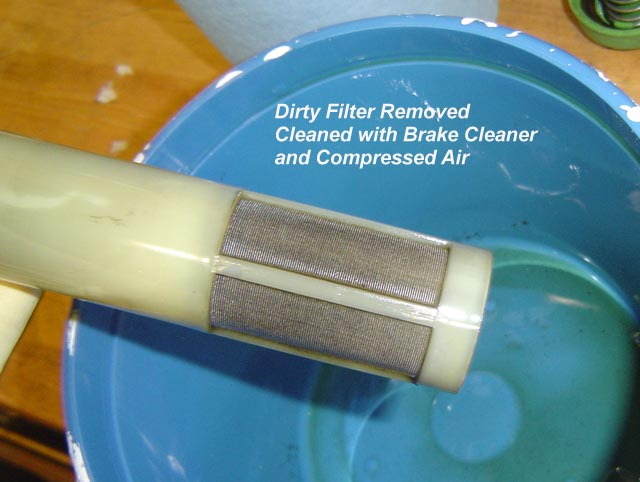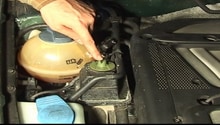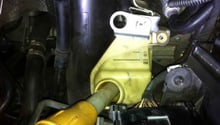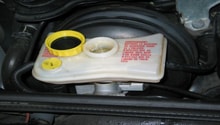Audi A6: How to Change Power Steering Fluid and Bleed
Can you remember the last time you changed your power steering fluid? If not, it's probably time to flush your system. This article will walk you through the process of changing out that old, nasty power steering fluid and bleeding the system.
This article applies to the Audi A6 C5 and A6 C6 (1995-2011)
All the oils in your car get dirty, losing their viscosity as well as lubricating abilities with time, and the hydraulic power steering system is no different. Audi vehicles can be very temperamental about which fluids are used in them, so it is important to use the correct type of power steering fluid, and make sure you bleed the system afterwards to get the rack fully lubricated. The OEM fluid replacement is Pentosin CHF 11S synthetic, which works in all A6 cars and wagons from 1995 to 2011, but do not use just any bottle of power steering fluid you find at the auto parts store, or you can damage your power steering pump and rack.

Materials Needed
- (2) 1" hose clamps
- 2 or 3 liters of power steering fluid
- Bucket or drain pan
- Phillips head screwdriver
- Needle nose pliers
- Compressed air
- Golf tee
Step 1 – Drain old power steering fluid
Remove the Phillips head screw from the power steering fluid reservoir and lift it out firmly but gently to release it from its retaining clips. Remove the clamp from the return line (on the right, and it sits up higher than the supply line) with needle nose pliers. Place a bucket or drain pan underneath the the return line, remove the line, and allow the fluid to drain from the reservoir. Once drained, remove the filter from the reservoir and clean it. You can use some compressed air to dry it out after cleaning.

Figure 1. Unscrew and lift up the reservoir. 
Figure 2. Remove the return line and allow the fluid to drain. 
Figure 3. Clean the filter.
Step 2 – Flush (bleed) the system
Place a golf tee in the supply line of the reservoir, or simply crimp it with a pair of locking pliers. Fill the reservoir with fresh power steering fluid (around one liter). Set the supply line into the empty fluid container. Start the engine and let it run for one to two seconds, then turn it off. This allows the clean fluid to get into the system and pushes the dirty fluid into the empty container. Empty the container and place the supply line back in it. Refill the reservoir and run the engine for one to two more seconds. Repeat the process until there is nothing but clean fluid in the container.
Replace the line and clamp, then top off the reservoir to the fill line. With the reservoir cap off, start the car and turn the wheel from lock-to-lock a few times, pausing briefly at each full lock. Check your fluid level and top off again if necessary. Observe the reservoir and look for air bubbles while completing this process. Repeat until there are no more bubbles and there is no air in the system.

Related Discussions and Site
- Power Steering Fluid - AudiWorld
- Power Steering Fluid Flush - AudiWorld
- Power Steering Fluid Flush - AudiPages






